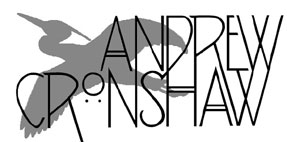
- Andrew Cronshaw website -
- Andrew Cronshaw MySpace -
- Cloud Valley Music website -
- Andrew Cronshaw website -
- Andrew Cronshaw MySpace -
- Back to Reviews Introduction page -
Written in Folk Roots issue 103/104, 1992
ANSAMBLUL SALBA PRAHOVEI
Ansamblul Folkloric Românesc
Syncoop 5750 CD112 (1990)
ENSEMBLE PECE ATANASOVSKI
Dances of Macedonia, Yugoslavia
Playasound PS 65076 (1991)
VARIOUS ARTISTS
Traditional Music from the Eastern Carpathians
Harmonia Mundi/Quintana QUI 903029 (1991)
SANDOR DÉKI LAKATOS & HIS GYPSY BAND
Hungary - Gypsy Violins
Harmonia Mundi/Quintana QUI 903027 (1991)
Ansamblul Salba Prahovei is a Romanian folk orchestra directed by Puiu Dragan,
recorded in a Rotterdam studio, featuring violins (Victor Enache, Stelian Grama,
Cornel Paraschiv, Adrian Hodoroaba), scampering cymbalom (Ion Dragoi), accordion
(Vasile Dragoi), bass, clarinet (Constantin Anton), kaval, flute, cimpoi
(bagpipe - a little unusual in this sort of line-up)(Stanila Zaharache), panpipe
(Gigi Iancu) floating and zipping. Its repertoire is fairly, but not entirely,
standard; varied, with doinas, sirbas, horas and other forms, excellently
played, and undeniably exciting. A good range of solo instruments lead:
panpipes, cimbalom, fiddle, accordion, kaval, cimpoi and clarinet, as well as
some songs from the authoritative Eliza Ghica, whose voice is relatively deep
and open-throated, unlike the tight hard sound of much Bulgarian singing.
A sleeve of the "colourful folkloric" school,
depicting a group of dancers and no musicians, and hugely inaccurate and
quaintly translated notes in French & English give little hint of the rough
wildness and compelling limping rhythms of the music of Ensemble Pece
Atanasovski, played on bagpipe, breathy whistle or kaval, tambura, clarinet or
taragota, shawm, accordion and drum. It's much more arabic sounding than the
music of more northerly Balkan regions. No musicians' names or instrumentation
are given, except to mention that the lead instrument is the violin (which as
far as I can tell doesn't appear on the recording at all, any more than does the
"syrinx" (panpipes)). The track listing claims that all titles are composed by
B.Estacada, which I find impossible to believe. One wonders how a record label
this disorganised can find its way to the CD plant. Despite it all, what we have
here is powerful music. It might even be played by Ensemble Pece Atanasovski.
Traditional Music from the Eastern Carpathians
is a collection of field recordings, totalling 35 tracks, made of musicians and
singers, solo and in groups, of the Hungarian minority in the Ukrainian, but
previously Hungarian regions of Bereg, Máramaros and Ugocsa by Ferenc Kiss and
Antal Stoller over a period of time beginning in 1971. Ferenc Kiss in his
booklet notes laments the fragmentary condition of the once rich musical
tradition of these people, the pressure against their using the Hungarian
language, and the difficulty of contact across closed borders. He finishes: "We
beg your indulgence for the instrumentalists' and singers' unsureness; we are
dealing with musicians who had no opportunity to practise their art for twenty
or thirty years... the clarinet was disinterred from the drawer, the accordion
from the cellar, the violin from the attic, and the voice that sings is hoarse
and tired..." Nevertheless, there's still much energy, skill and meaning here,
in very varied music for many social uses - recruiting dances, a lament, several
csárdás', including a recording of the Gypsy Band of Nagypalád, fairground
rhymes and songs, a Christmas carol, counting out rhymes, a Wallachian skipping
dance, a Gypsy rolling dance and stick dance, a Ruthenian wedding dance, round
dances, a wedding rite, Jewish dances, Rumanian dances, a Ruthenian men's dance,
an Alphorn signal and a vocal Alphorn imitation. Instruments include clarinet,
fiddle, Hungarian zither (strummed, like an Appalachian dulcimer), harmonica,
small cymbalom, accordion, double bass, drum, no-holed flute, Jew's harp,
zongura (guitar) and saxophone.
The work of Gypsy musicians, who, when playing
for non-Gypsies at least, take local forms and play them brilliantly in order to
earn a living while being outside society's career structure, runs, as does
Jewish music for similar reasons, like lettering through the rock of European
music. One of its flashiest manifestations is in Hungary, and Sándor Déki
Lakatos and his Gypsy Band know how to go about it. Actually, none of the
sources of the music on this 68-minute CD is described as traditional, though
Hungarian Recruiting Dance and Quick Csárdás by Lakatos, Hungarian Ballad
and Csárdás, Quick Csárdás in B minor and parts of other items have
Hungarian forms as their basis. The majority of tunes are by Sándor or Tibor
Lakatos, but, as one might expect with this style of violin playing, there's a
Fritz Kreisler number, as well as a lovely Jules Massenet tune, Thaďs,
adapted as Méditation, a version of Jenö Mezey's Caprice Noir
featuring Rezsö Bujka on clarinet, and Pablo de Sarasate's adaptation of
Chopin's Nocturne in E flat Major played by Sándor with Oszkár Ökrös as a
violin and cymbalom duet. Sarasate or Chopin might find it a little, well,
schmaltzy; I don't know if there's a Romany word for that piece of Yiddish,
though perhaps if there is it would translate as "going for it".
© 1992
Andrew Cronshaw
You're welcome to quote from reviews on this site, but please credit the writer
and fRoots.
Links:
fRoots - The feature and
review-packed UK-based monthly world roots music magazine in which these reviews
were published, and by whose permission they're reproduced here.
It's not practical to give, and keep up to date,
current contact details and sales sources for all the artists and labels in
these reviews, but try Googling for them, and where possible buy direct from the
artists.
CDRoots.com in the USA, run by
Cliff Furnald, is a reliable and independent online retail source, with reviews,
of many of the CDs in these reviews; it's connected to his excellent online magazine
Rootsworld.com
For more reviews click on the regions below
NORDIC
BALTIC
IBERIA (& islands)
CENTRAL & EASTERN EUROPE, & CAUCASUS
OTHER EUROPEAN AMERICAS OTHER, AND WORLD IN GENERAL
- Back to Reviews Introduction page -